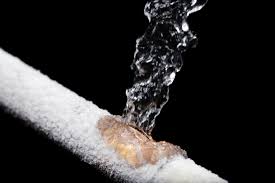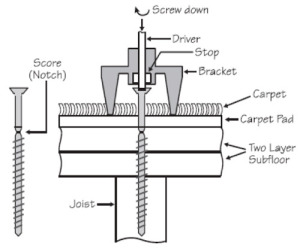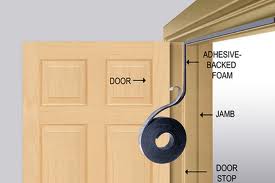
Like last year, temperatures are again reaching single digits.
Just because you have not had any problems since you have lived in your home, doesn’t mean you won’t now. Everyone is at risk….regardless of how new your home is, however, homes built before the 80’s are particularly susceptible.
Biggest risks (in order of incidence of problems)
• Exterior faucets (aka “hose bib”)
• Pipes in Crawl spaces
• Pipes in garages or other unheated spaces
• Pipes in exterior walls
EVERYONE should do ALL the following:
1. Main Shut Off: Know where your main water shut-off is to your home. There are TWO locations, ONE is INSIDE the meter box by the street (you need a special tool…)…and the other should be (Basement) just inside the exterior foundation wall, where the main water line enters from the street or (Crawlspace) in the crawl or next to the water heater or (Slab) next to the water heater.
2. Outside Faucets: Find the inside valve or “cut-off” to all exterior faucets and shut them off.
• Often located near the wall, drop ceiling or cabinet where the faucet is located but also can be a distance away near a utility area.
• Valve is usually a circular handle, (“tighty-righty” & “loosey-lefty”) but can be a lever (lever shut off position is at a 90 degree angle to the pipe)
• Once the inside valve is shut off, OPEN the faucet on the OUTSIDE. This will allow any water in the pipe to exit and leave none to freeze.
• If it’s “too late” and you are already frozen….grab a hair dryer, extension cord and some mittens and heat it until it the outside faucet opens up.
• Insulate or wrap the outside faucet/hose-bib
• Hardware stores sell a half-sphere Styrofoam deal that attaches to your faucet.
Most should also do the following:
1. Leave your water running on the INSIDE faucets. If it’s going to be single digit temps, do a slight run, not just a drip.
2. Open any interior cabinets where there is plumbing at an exterior wall…This is usually a kitchen or bath. This will allow more heat in where plumbing is.
3. Crawlspace or other less insulated/conditioned areas: be sure all pipes are insulated.
 The part of the floor you see sits on top of the subfloor. That is, in turn, supported by large boards called joists. If there aren’t enough screws holding the subfloor to the joists or if for other reasons there are gaps between the joists and the subfloor, squeaking can occur. You can fill these gaps with hardwood shims if you have access to the subfloor from below (if it’s unfinished).
The part of the floor you see sits on top of the subfloor. That is, in turn, supported by large boards called joists. If there aren’t enough screws holding the subfloor to the joists or if for other reasons there are gaps between the joists and the subfloor, squeaking can occur. You can fill these gaps with hardwood shims if you have access to the subfloor from below (if it’s unfinished).




 When you consider how you use energy at home, up to 70 percent of your energy usage may be attributed to heating, cooling and appliances. If you plan to make upgrades in these areas, we want to help make these largest energy users even more affordable for you.
When you consider how you use energy at home, up to 70 percent of your energy usage may be attributed to heating, cooling and appliances. If you plan to make upgrades in these areas, we want to help make these largest energy users even more affordable for you.